Smart Access Memory: the simple switch that makes an all-AMD gaming PC sing
Never turn your nose up at free performance.
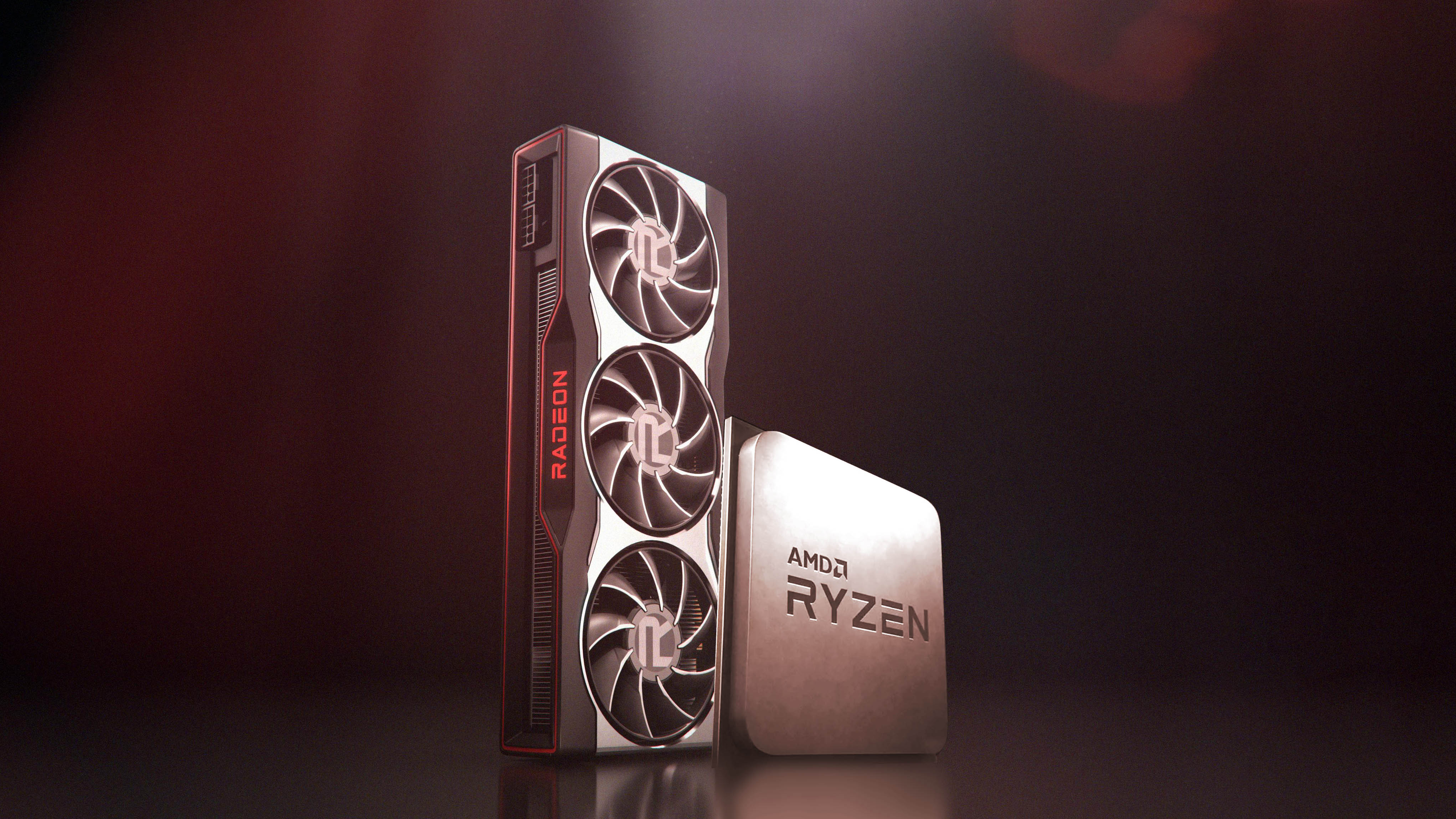
With the introduction of AMD's RX 6000-series GPUs, it's possible to build a high-end PC that's entirely reliant on red team technology. Multi-core processor running at 4.7GHz? Got it. Enthusiast-grade 4K graphics card? Fitted. PCIe 4.0 motherboard to plug it all into? Raring to go. Snap it all together and there's even potential for a little bonus performance that AMD just found down the back of the PCIe interconnect, covered in dust. Something it likes to call Smart Access Memory.

Best CPU for gaming: the top chips from Intel and AMD
Best graphics card: your perfect pixel-pusher awaits
Best SSD for gaming: get into the game ahead of the rest
It's been a while since we would, nay, could wholly recommend an all-red rig for anything beyond the mid-range of gaming PCs. And by that I mean a fairly high-end PC, RX 5700 XT and all, but the spectrum is so skewed that we're meant to think a $1,500 gaming PC is somehow 'mid-range'. Regardless, AMD has been an easy enough recommendation to make for the budget and mid-range gamer, and for a good few years now, too. But we've not seen the company cover all its bases, from CPU and chipset to GPU, in such a way as to corner the high-end market completely.
But with the introduction of the Ryzen 5000-series and the Radeon RX 6000-series, that's changed. For the first time in a long while we're seeing a CPU and GPU combo capable of 4K gaming and high refresh rates off the same factory floor. That already nets some Intel-abating gaming performance that we're already pretty smitten with, but if you were one of the lucky ones able to not only score a Ryzen 5000 CPU on launch day but also net an RX 6800-series GPU, there's a little more performance left on the table.
Smart Access Memory, or SAM, may sound like a rogue AI in an artsy Netflix special about the deepest recesses of the brain, but it's actually a simple switch that could effectively increase your gaming performance by a small, yet not insignificant, amount. While not exactly the exclusive members-only benefit we first thought, and likely coming to an Nvidia and even Intel PC near you in the future, this functionality is live on AMD 500-series chipsets, RX 6000-series GPUs, and Ryzen 5000 CPUs right now.
Even AMD has said that SAM is not exactly proprietary, for whatever good that's worth in regards to future compatibility.
To put it to the test, I've got the admittedly expensive MSI X570 Godlike motherboard, which has already seen a brand new beta BIOS capable of running SAM come down the internet pipes.
Once the BIOS is updated to the latest version (in this case, 7C34v1C1) you can hop into the advanced settings and enable 'above 4G decoding' and 're-size BAR'. That essentially opens the door for your CPU to better access your graphics card's onboard memory and make greater use of the PCIe interconnect between the two.
The biggest gaming news, reviews and hardware deals
Keep up to date with the most important stories and the best deals, as picked by the PC Gamer team.
A discrete GPU will have just a small portion of its frame buffer open and available to the system at any one time via the PCIe bus, typically 256MB. With the resizeable BAR function, which is listed within the PCI-SIG specifications, the system can expose the entirety of the graphics card memory and thus remove this potential limitation between the GPU and the rest of the system.
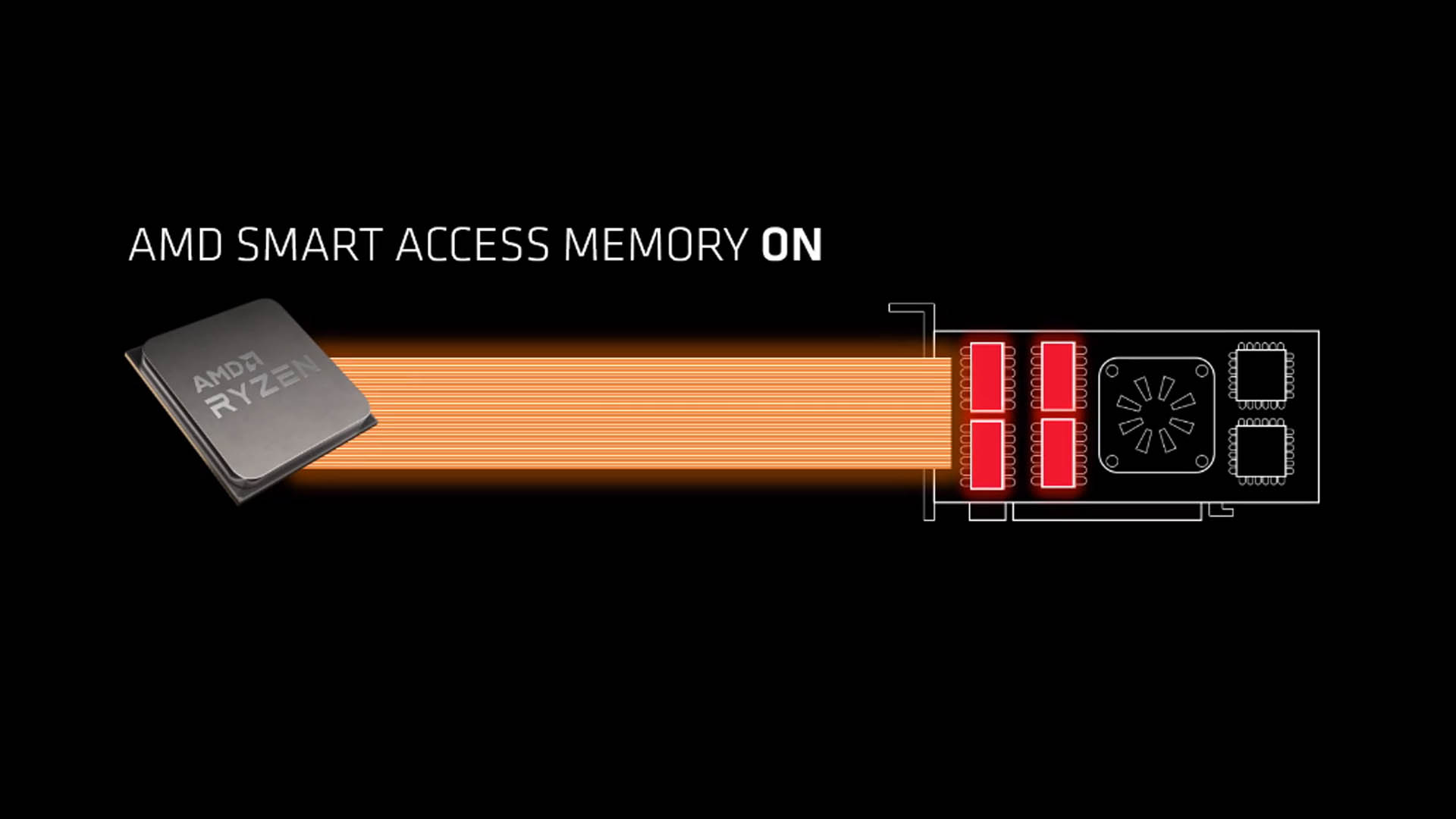
In this case, that's a system powered by the AMD Ryzen 5800X, an eight-core processor that runs at up to 4.7GHz. That's enough to keep up with an Intel Core i7 10700K, although that really all depends on the games. But with so little between CPUs in terms of raw gaming performance, little boons, such as SAM, can tip the odds in the favour of one over the other.
I've also gone for the larger of the two currently released AMD RX 6000-series cards, the RX 6800 XT. It's possible to enable SAM on the RX 6800, though, and you'll soon be able to do the same on the RX 6900 XT—in fact, it looks like AMD's betting you do in order to top the RTX 3090.
But the RX 6900 XT launch is… deep breath… two whole weeks away yet. So let's do away with the hypotheticals and get to the actual performance figures.
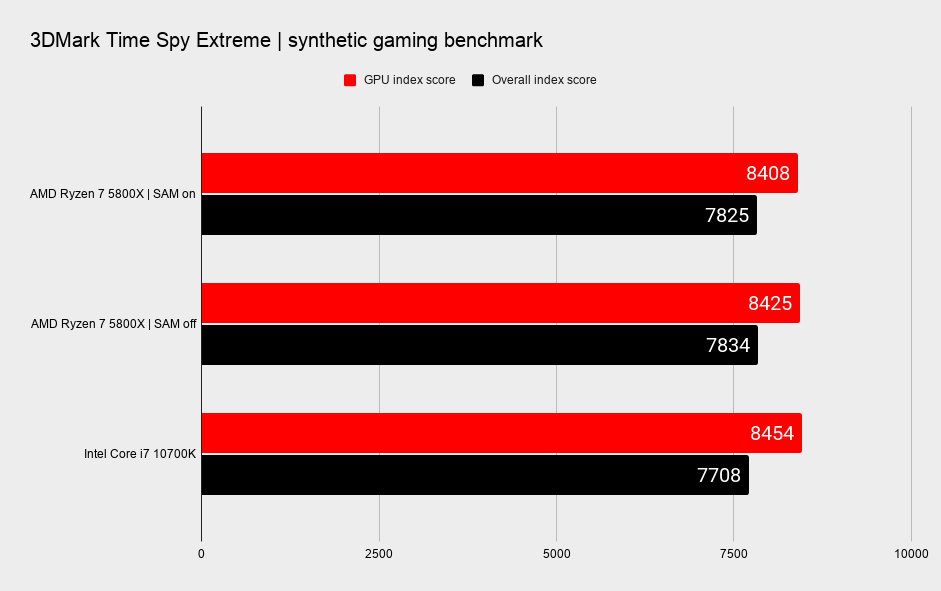
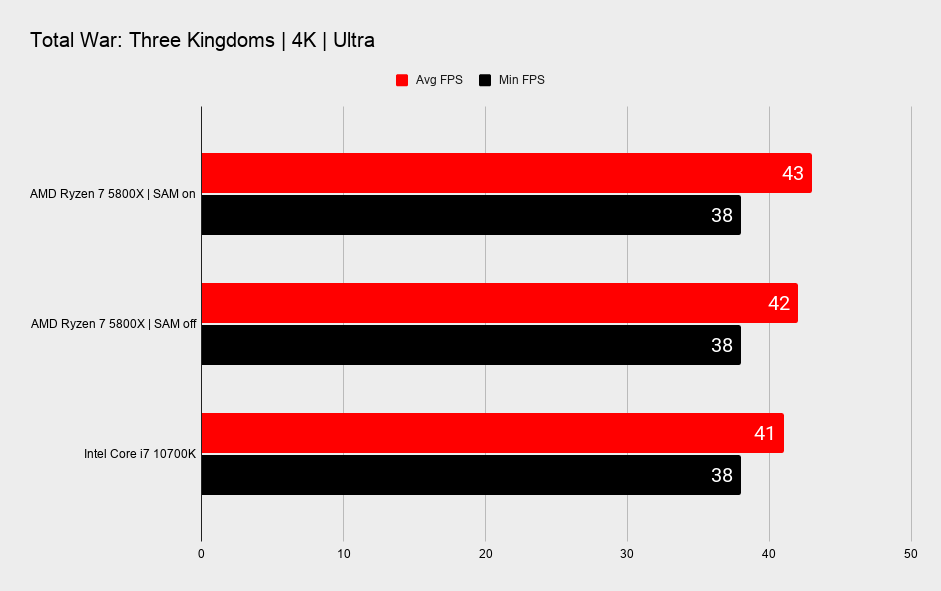
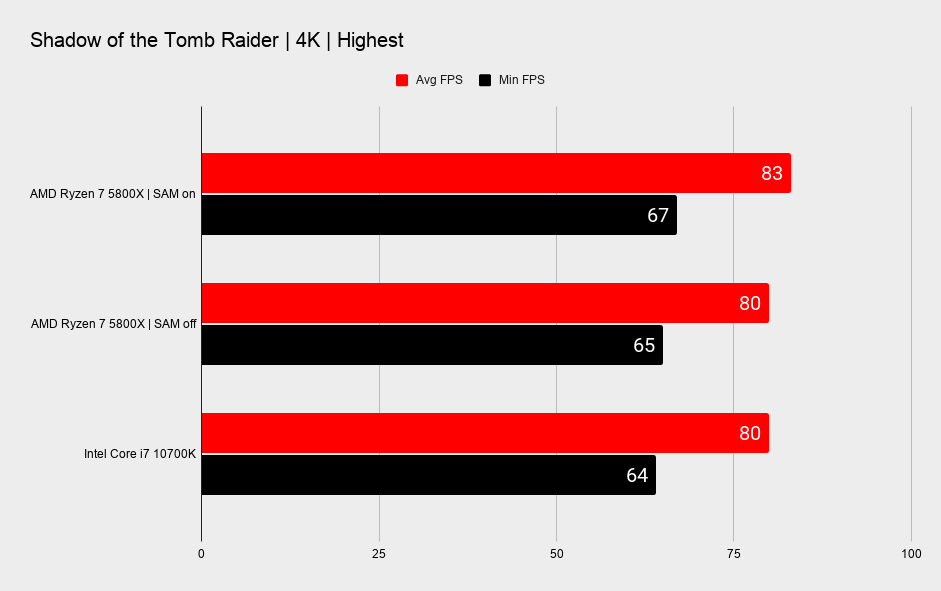
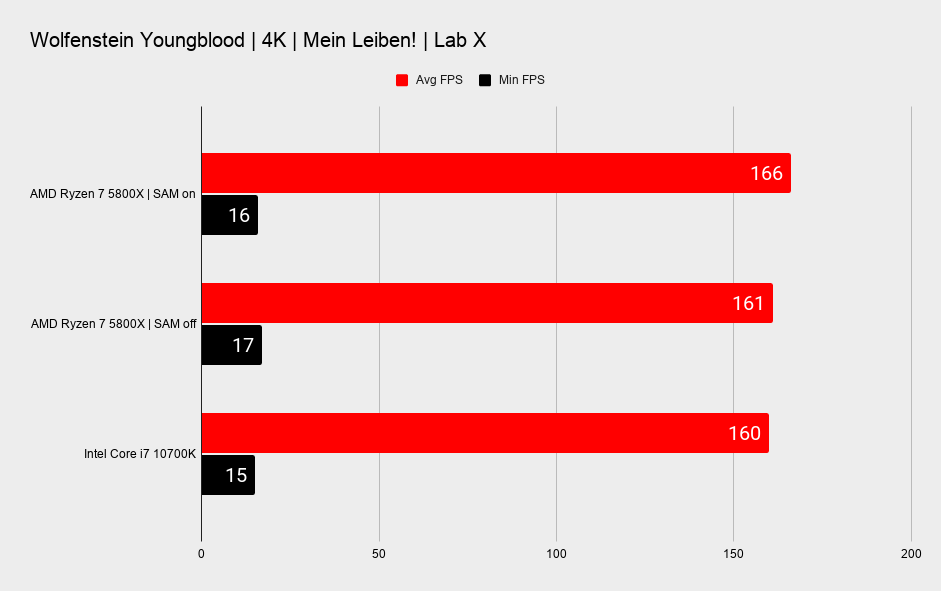
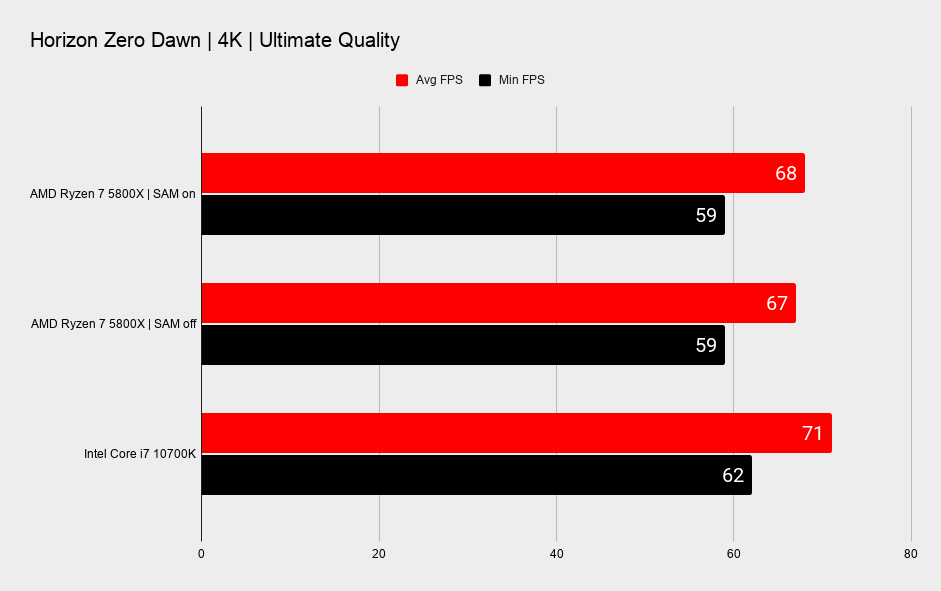
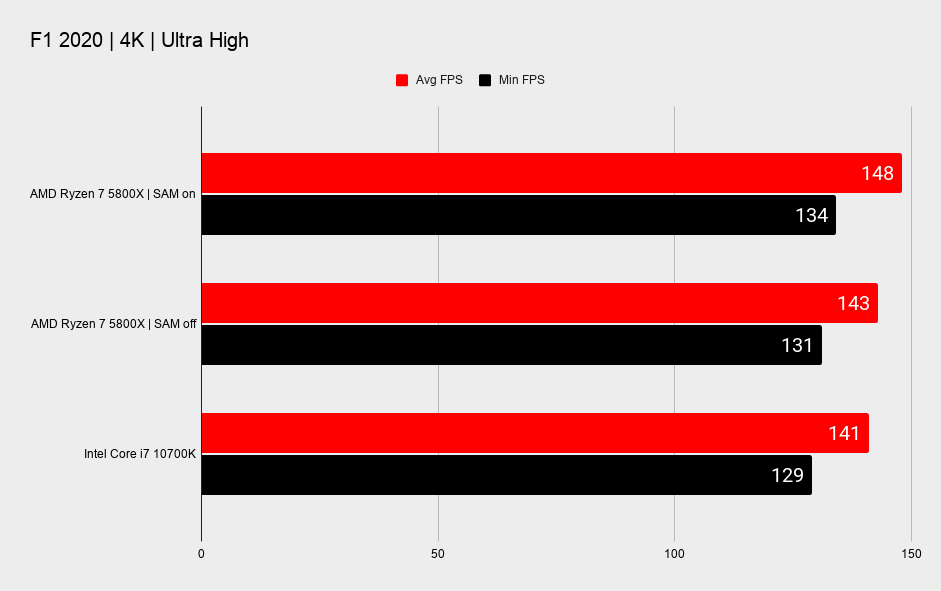
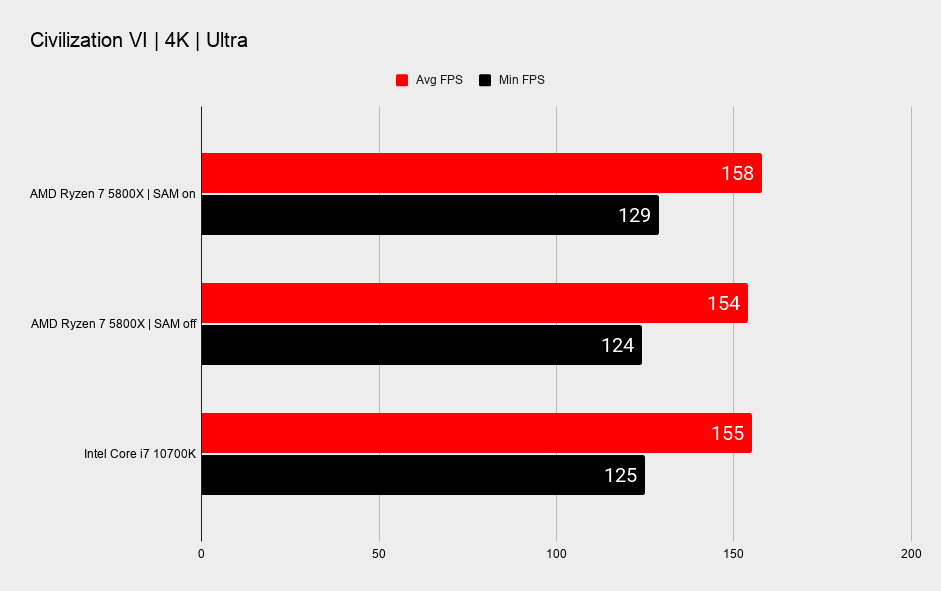
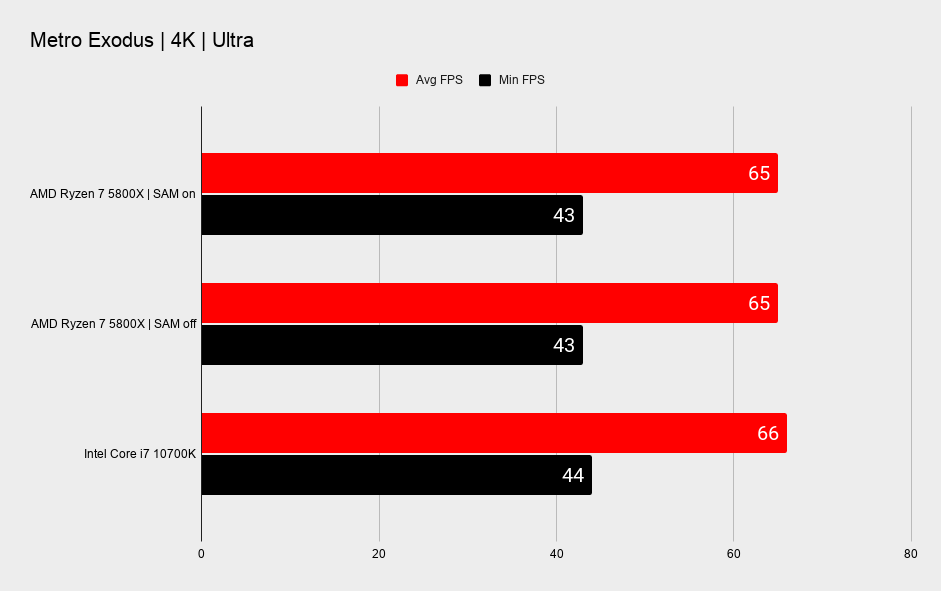
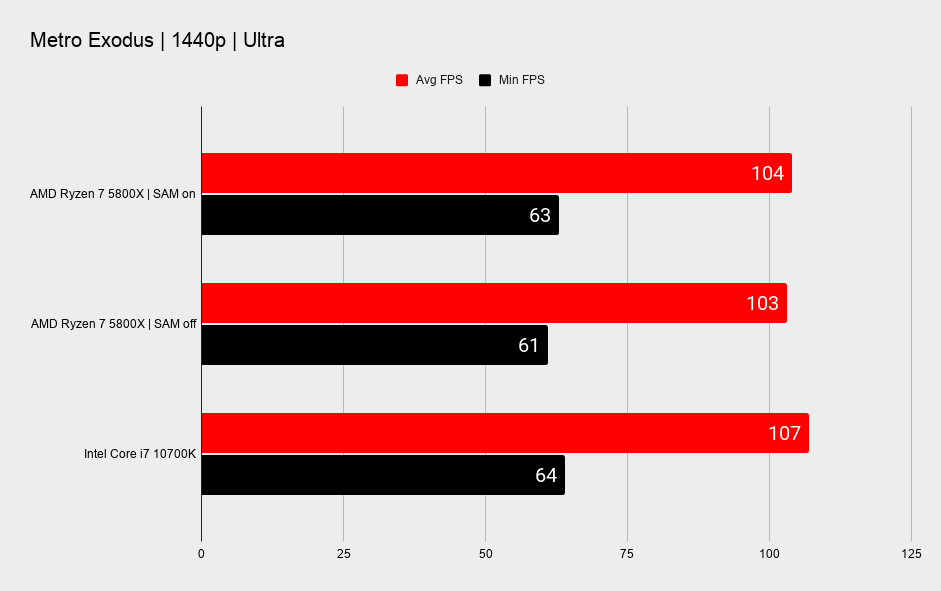
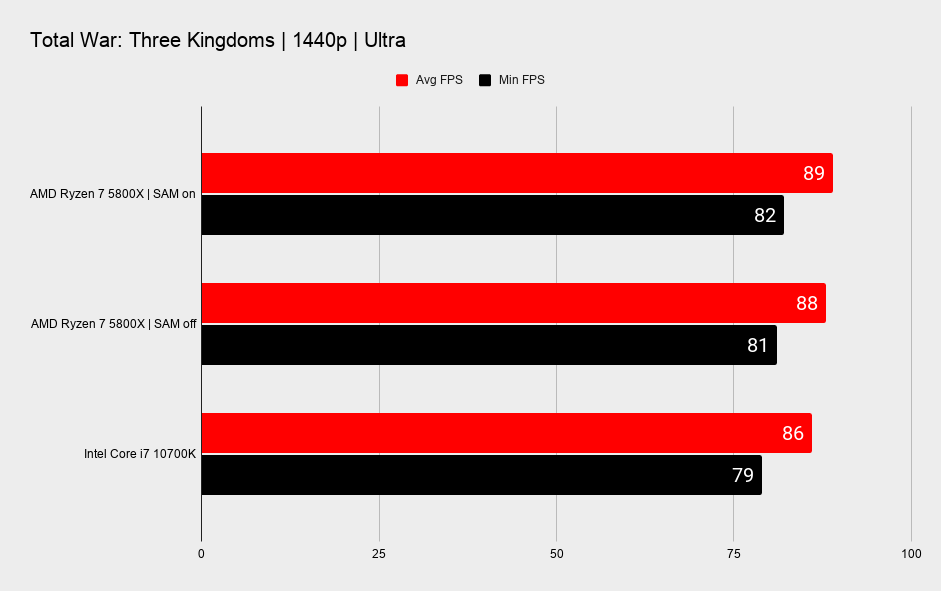
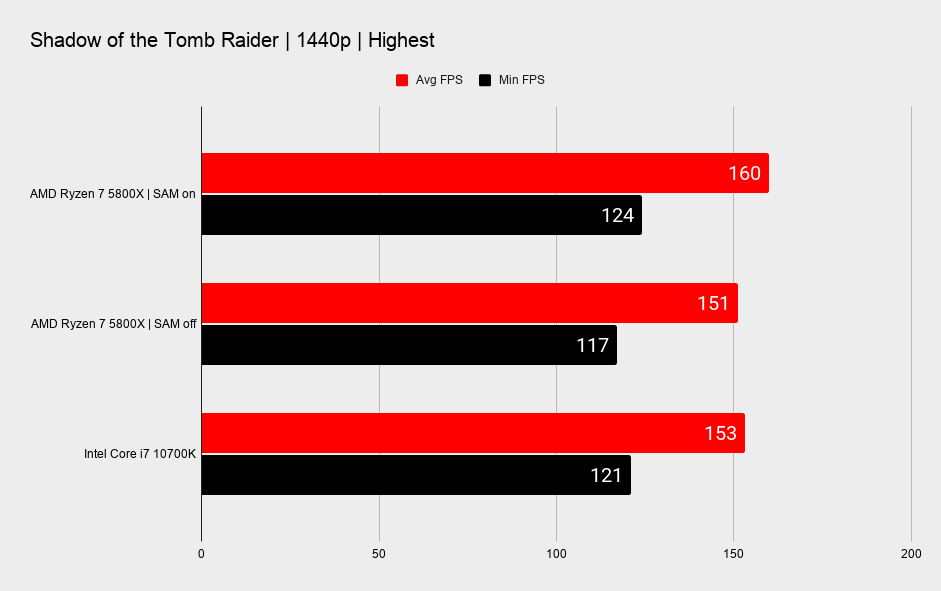
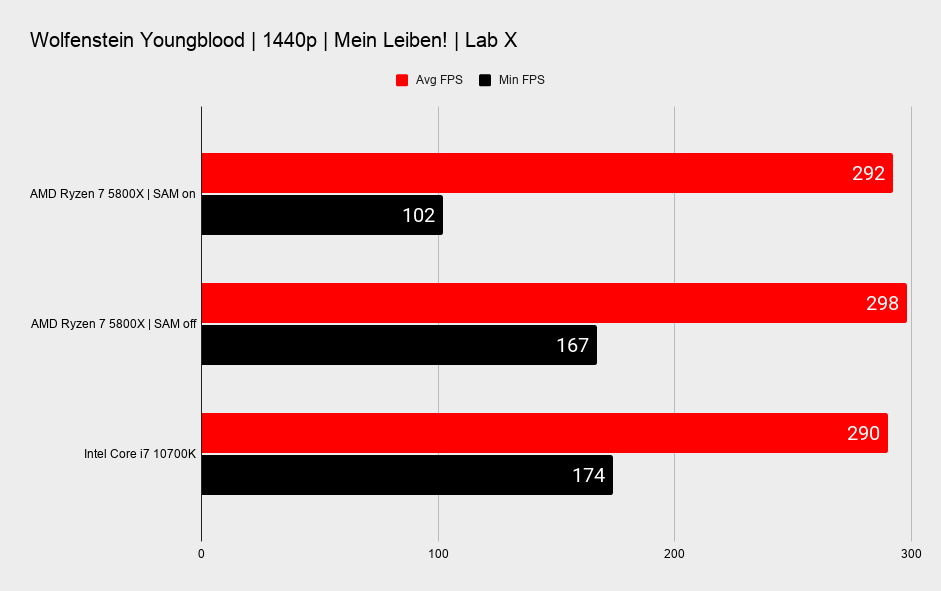
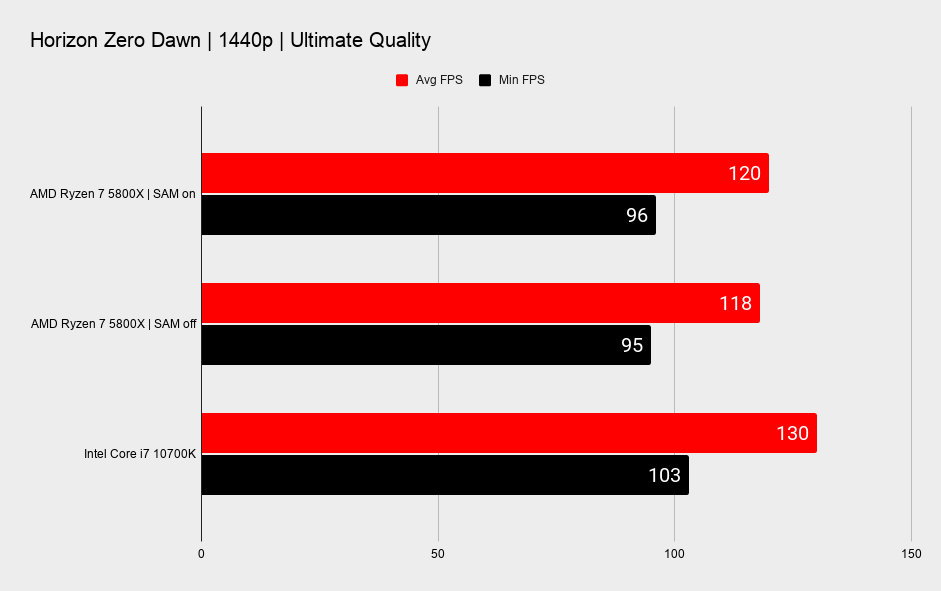
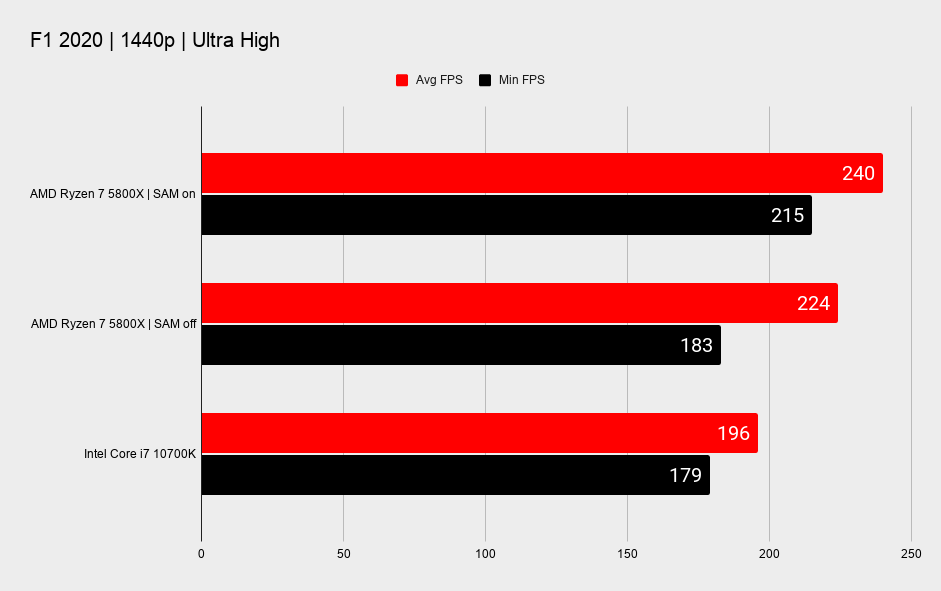
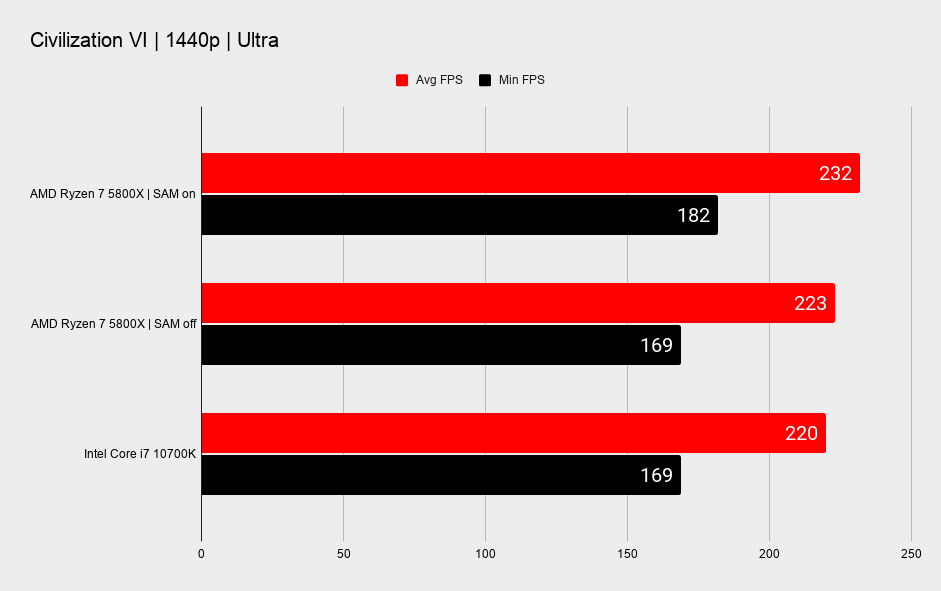
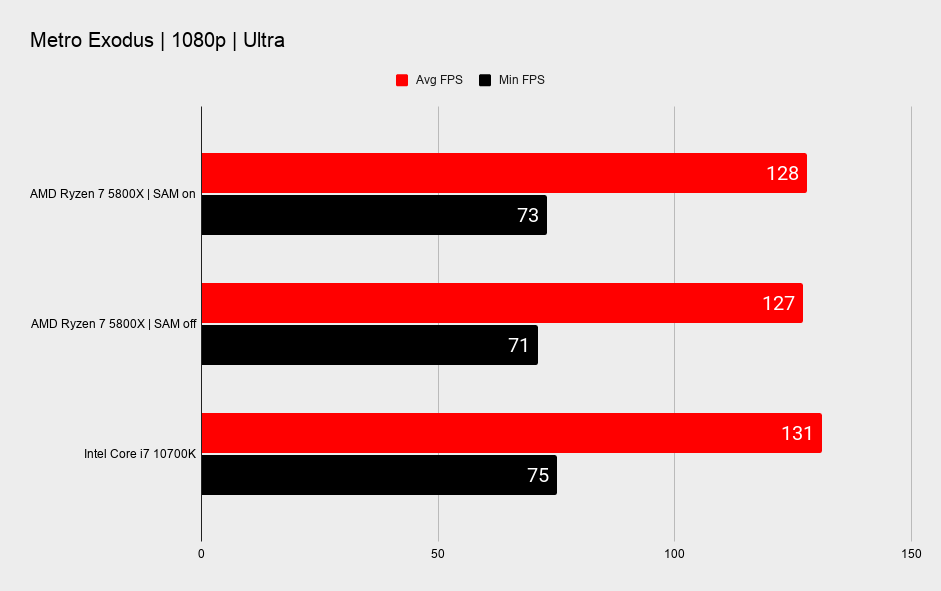
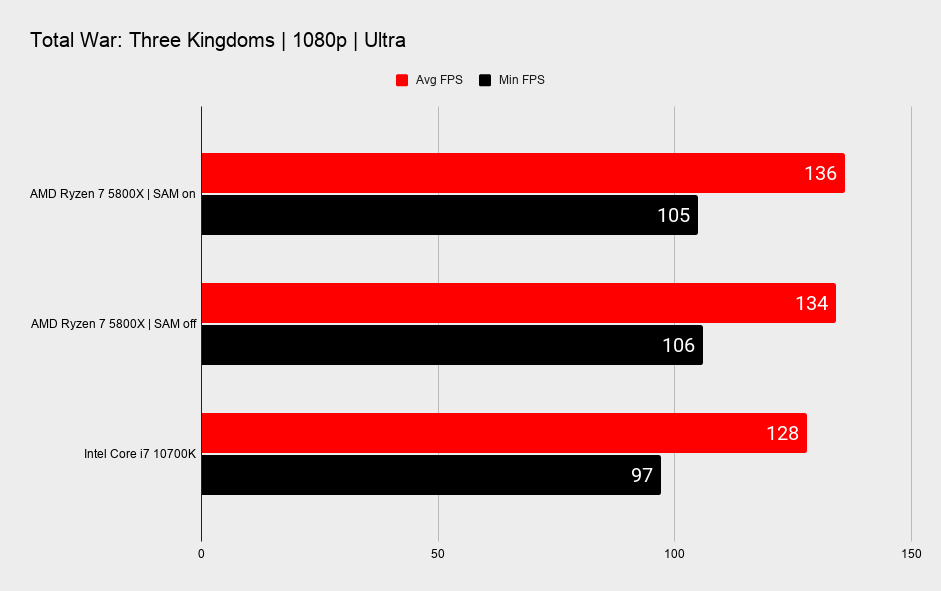
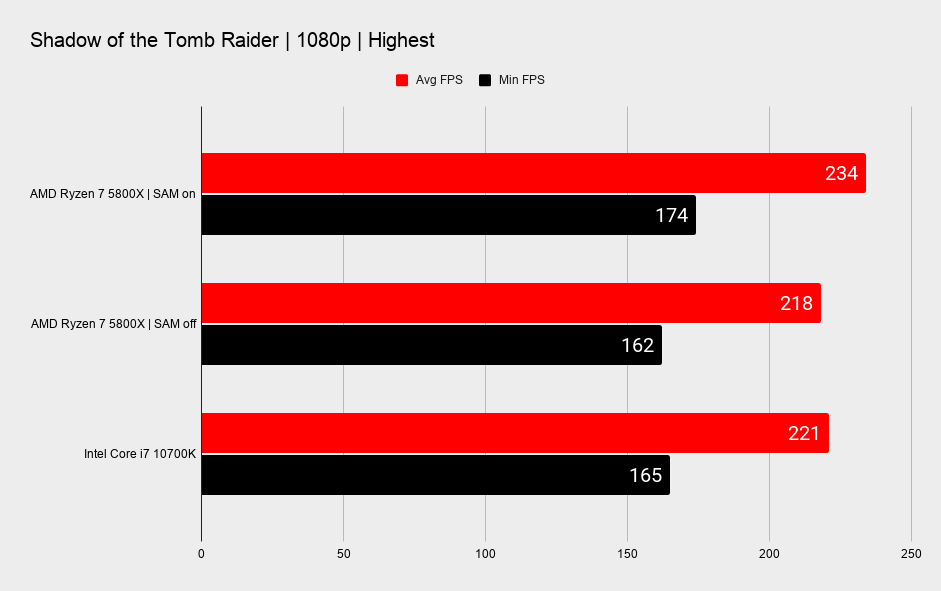
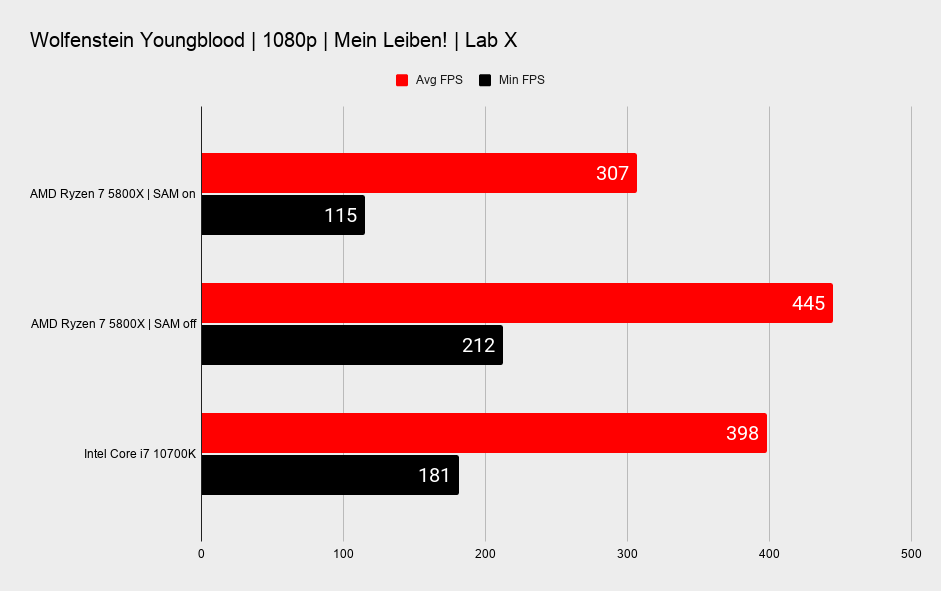
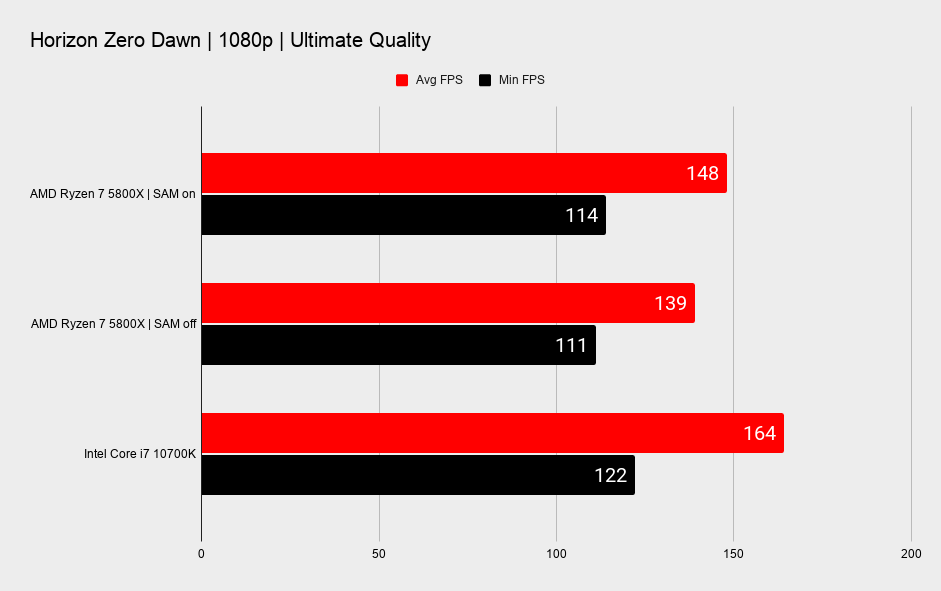
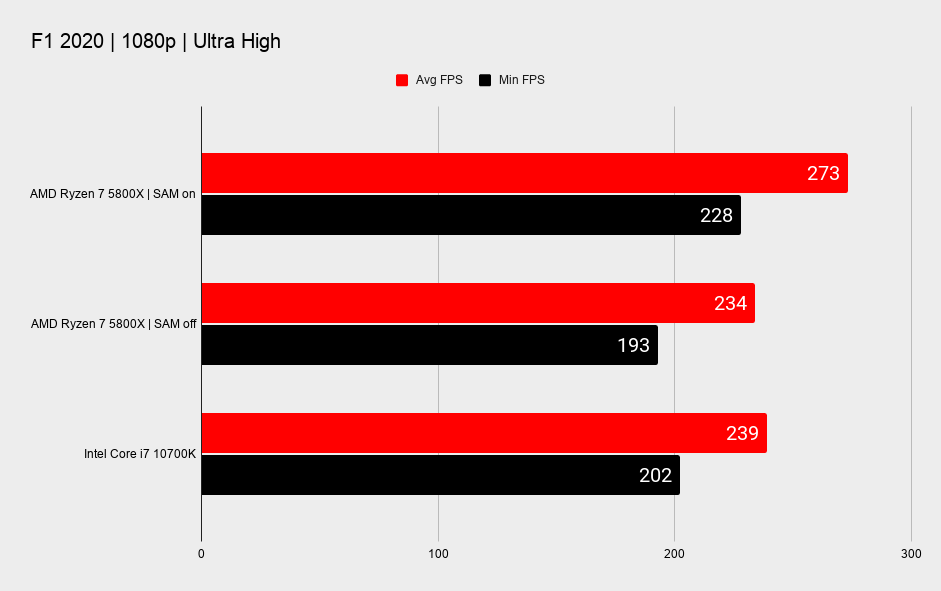
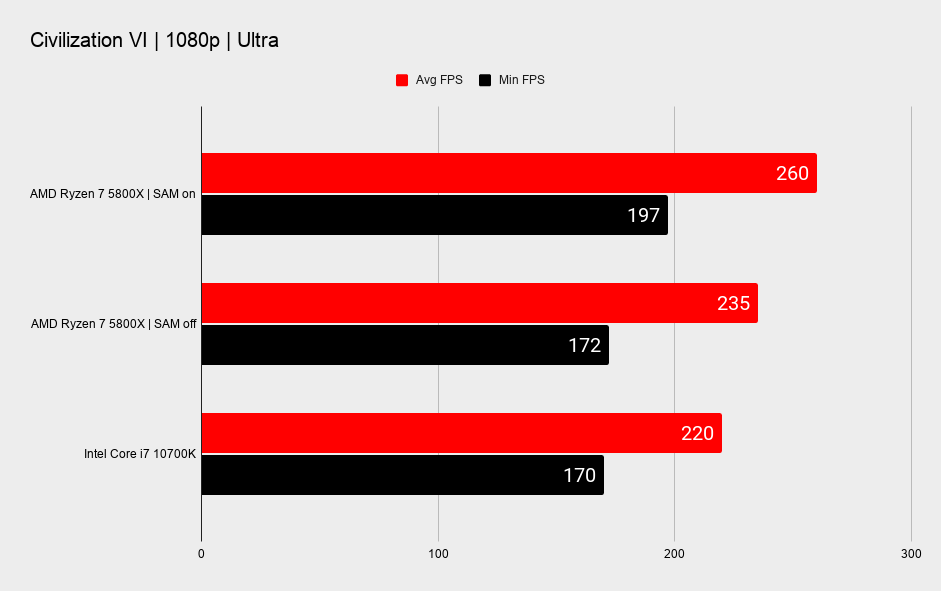
CPU - AMD Ryzen 5 5800X / Intel Core i7 10700K
Motherboard - MSI Godlike X570 / MSI MPG Z490 Gaming Carbon WiFi
RAM - Corsair Vengeance RGB Pro @ 3,200MHz / 3,466MHz
CPU cooler - Corsair H115i RGB Pro XT
PSU - NZXT 850W
Chassis - DimasTech Mini V2
No matter which way you look at it, GPU or CPU, AMD is fighting over inches with its SAM functionality, a single-digit percent change. But that's not all that insignificant when you're looking at 1080p, where a couple of percent can be 10s of frames—some GPU releases have fought and died over less.
On paper, too, SAM helps AMD cement a lead over Intel in games where it was a close run affair. All but Wolfenstein, in which the SAM on system just couldn't break 400fps. We'll chalk that one up to unknown forces, as the stock system managed to surpass Intel's 10700K just fine.
But it's also worth noting just how well our Intel Core i7 10700K system came through without any performance enhancements. In fact, it did so with slightly slower memory as I could not get the Ryzen build to post at 3,200MHz.
| +/- percent (avg fps) | 4K | 1440p | 1080p |
|---|---|---|---|
| F1 2020 | 3.5% | 7.1% | 17% |
| Horizon Zero Dawn | 1.5% | 1.7% | 6.5% |
| Metro Exodus | 0% | 1% | 0.8% |
| Civilization VI | 2.6% | 4% | 10.6% |
| Total War: Three Kingdoms | 2.4% | 1.1% | 1.5% |
| Shadow of the Tomb Raider | 3.8% | 6% | 7.3% |
| Wolfenstein Youngblood | 3.1% | -2% | -31% |
But it an easy win for AMD. While arguably it's not a great look—having Nvidia all but call you out for your new feature—Smart Access Memory is as simple as enabling a setting in your BIOS. A flick of a switch for a net gain that's greater than many comfortable long-term overclocks will offer on modern hardware, and that's partially thanks to the work AMD's put in verifying this feature will function as intended on plenty of hardware.
So while it might not speak for much in the ongoing feud between our silicon barons, right now, if you're eyeing up a new AMD gaming PC, there's plenty of reason to enable Smart Access Memory. So far, I can't see any downside to the end user. And all from a feature that was apparently hidden in the PCIe interconnect spec all along.
And if all goes to plan, we may be looking at a new default for gaming PCs whether you're on Intel, Nvidia, or AMD hardware. I mean, why leave even a sliver of performance on the table?

Jacob earned his first byline writing for his own tech blog. From there, he graduated to professionally breaking things as hardware writer at PCGamesN, and would go on to run the team as hardware editor. He joined PC Gamer's top staff as senior hardware editor before becoming managing editor of the hardware team, and you'll now find him reporting on the latest developments in the technology and gaming industries and testing the newest PC components.

